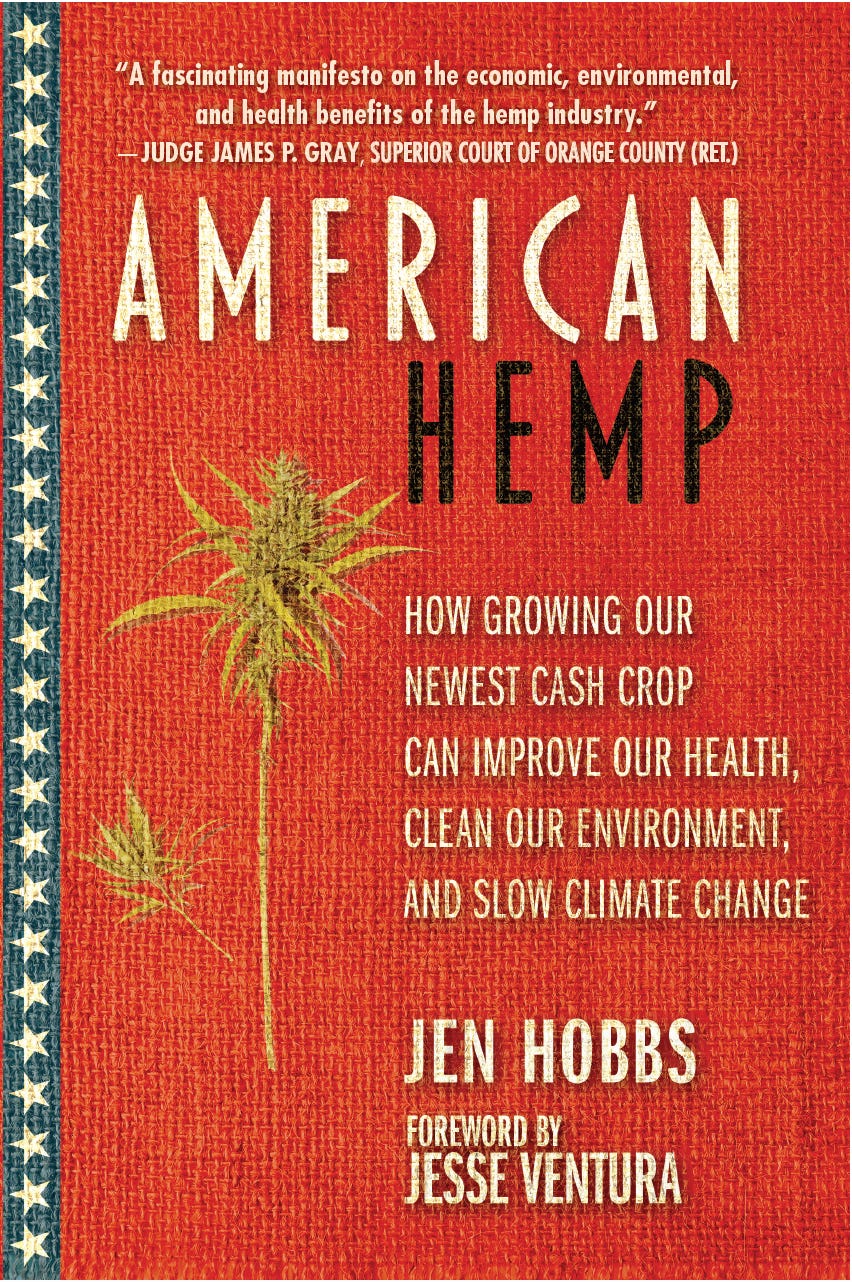Welcome to American Hemp!
My book launch is in about two weeks, so here we are….final count down….
This book is a long time coming! The concept started back in 2015 while I was busily co-writing Jesse Ventura’s Marijuana Manifesto. The book focused on aspects of marijuana - from the war on drugs to medicinal benefits. We included one chapter on hemp and a few hemp recipes in the cooking with cannabis chapter, but hemp definitely needed it’s own volume, and here it is.

I asked the Governor to write the foreword to the book because he’s always been an outspoken supporter for hemp legalization. When he was running for governor of Minnesota in 1998, he talked about how valuable hemp could be for the state’s economy on the campaign trail and during gubernatorial debates -

We actually got the rare opportunity to talk about hemp together on the 3rd episode of his tv show “The World According to Jesse.” This is about a year after his marijuana manifesto was published in paperback.
Here’s a quick 1.5 minute clip to part of that conversation —
Phytoremediation is the fancy term for hemp’s ability to remove toxins from the environment.
Here’s an excerpt from American Hemp about one of the first studies that examined phytoremediation in hemp:
Just as hemp absorbs nitrogen and other nutrients from the soil, it also absorbs heavy metals and toxins through a process called phytoremedation. There are other wild weeds that have the same ability, including Indian grass (Sorghastrum nutans), kenaf and canola, as well as black nightshade (Solanum nigrum), mustard plants such as Rorippa globosa, and even sunflowers. Since weeds can grow in a variety of climates, without maintenance, they’re ideal for cleaning up industrial waste sites. The root systems extract lead, copper, nickel, cadmium, zinc, arsenic, mercury, selenium, and other contaminants from soil and/or groundwater to lessen the toxicity. Hemp’s deep root system—which can grow as long as eight feet below ground—can extract these toxins from farther down in the soil than many other plants, making it the focus of many scientific studies on phytoremediation, predominantly in Europe.
In 1998, Ukraine’s Institute of Bast Crops planted hemp near the Chernobyl site exclusively for the purpose of removing contaminants, and proved that hemp can extract large amounts of radiation and heavy metals from the soil. The term “phytoremediation” was actually coined by Dr. Ilya Raskin, a plant biologist at Rutgers University, whose research has now been featured in over 200 scientific publications. He was part of the team that tested various plants’ ability to absorb cesium and strontium (radioactive metals), including Indian mustard plants and sunflowers.
“For the specific contaminants that we tested, hemp demonstrated very good phytoremediation properties,” stated Vyacheslav Dushenkov, a team member involved in the research.
Even though the phytoremediation research gathered at Chernobyl wasn’t actually implemented to clean up the site, the results were remarkable enough for researchers to continue to research hemp’s ability to extract various heavy metals as a low-cost solution for toxic cleanup.
To unlock the rest of this chapter excerpt…
Learn more about phytoremediation and hemp’s ability to clean our environment and slow climate change in the forthcoming book American Hemp!
Here are the direct links to order your copy of the book —
Amazon (32% off): http://bit.ly/AmericanHemp
Barnes & Noble (30% off): http://bit.ly/BNHemp
Books-A-Million: http://bit.ly/BAMHemp
Indie Bound: http://bit.ly/INDHemp
Simon & Schuster (accepts paypal): http://bit.ly/SSHemp
Target: http://bit.ly/tHempHobbs

